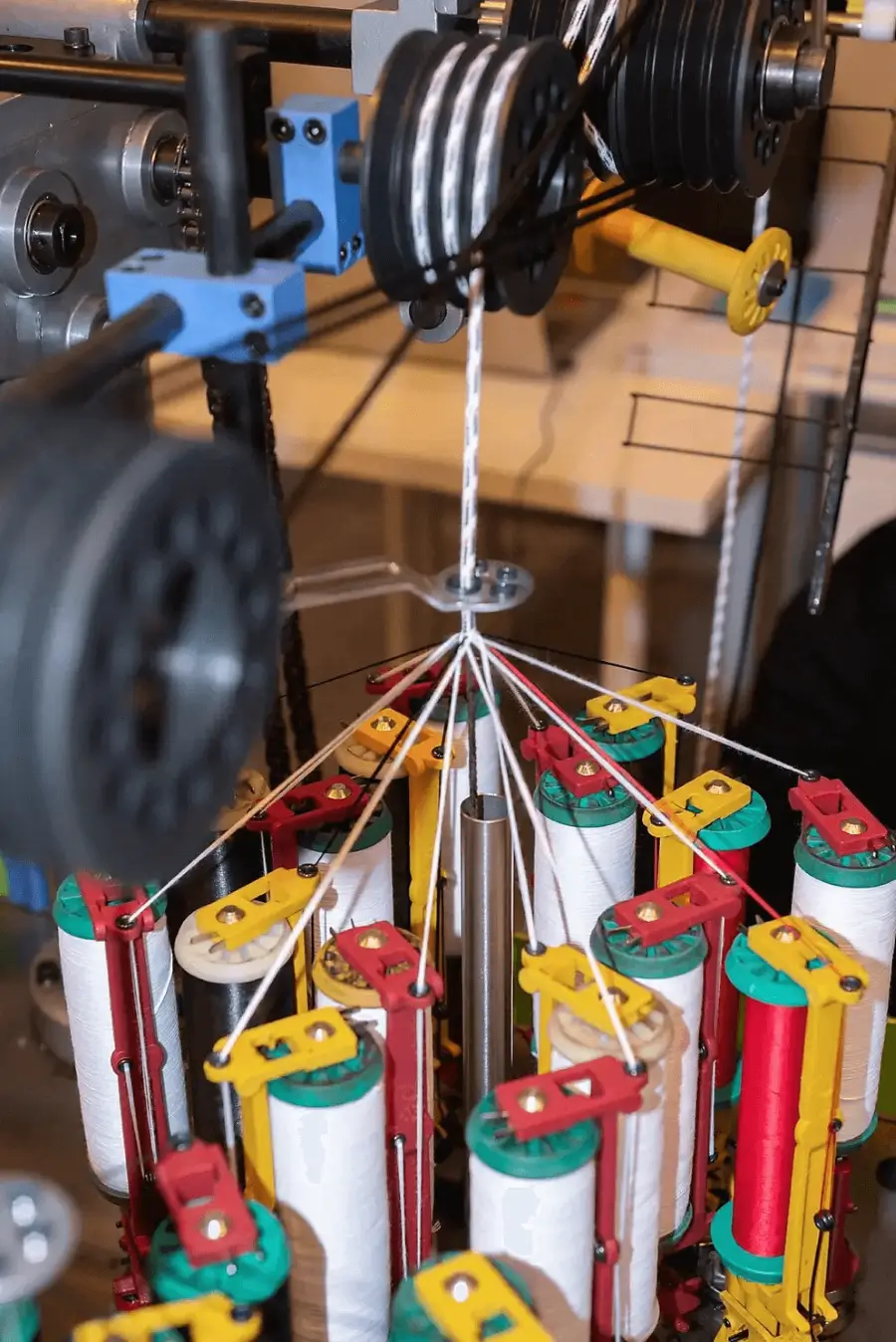Table of Contents
ToggleIntroduction
Is your recovery gear truly safe? Steel hard shackles are heavy, yet soft shackles are lightweight. This ultimate soft shackel vs hard shackle guide explores the facts. We compare strength, assess safety, and evaluate weight. Ultimately, you will discover which shackle type best serves your specific recovery needs.
What Defines The Soft Shackel Vs Hard Shackle Choice?

Considerations when selecting equipment are critical, and the soft shackle vs. hard shackle debate is, first and foremost, a matter of safety. In other words, what is a soft shackle?
A soft shackle is a connector made from super-strong UHMWPE fibers. A hard shackle, on the other hand, is made from metal, usually steel. Why do people ask what are soft shackles used for? From my own experience, you can use soft shackles in vehicle recovery.
It is also a great tool for marine mooring and sailing. In fact, Fulcrum Lifting notes that soft shackles “are significantly lighter—often weighing up to 80% less than their metal counterparts.” This core difference is why they are replacing metal alternatives. Why? The rigid steel is cumbersome, while the soft version is just a fraction of the weight. This hard shackle vs soft shackle guide will break it all down.
Soft Shackel Vs Hard Shackle: A Core Technical Comparison!
At this stage, we dive into specifics. In this case, we will focus on materials, weight, and flexibility.
A. Material Properties: UHMWPE Vs. Steel
The first major difference in the soft shackel vs hard shackle comparison involves the base materials. Soft shackles are made from UHMWPE synthetic fibers. A soft shackle, for example, is incredibly strong yet remarkably light. Conversely, hard shackles (or a hard shackel) are constructed from metal.
Common hard shackle types include forged steel and stainless steel. While steel is exceptionally durable, it is also very heavy. Synthetic fibers, however, are lightweight. This fundamental material difference directly affects the soft shackle vs hard shackle weight, safety, and overall functionality.
1. Synthetic Fiber
UHMWPE
UHMWPE stands for Ultra-High Molecular Weight Polyethylene. This advanced fiber is exceptionally strong and possesses a remarkably high strength-to-weight ratio. In my experience, this extreme ratio is the primary reason it forms the core of every high-quality rope soft shackle.
Lightweight
The core of the soft shackle rope is made from this specific fiber, which results in a very light soft shackle. This advantage is highly beneficial, as the soft shackle vs hard shackle weight difference is significant. The practical outcome is superior ease of carrying and handling.
2. Metal Construction
Forged Steel
Hard shackles are typically constructed using forged steel. This material offers immense rigidity and toughness. The hard shackle vs soft shackle discussion always highlights steel’s durability as a key feature. Steel is certainly capable of withstanding rough use and gets the job done.
Heavier
Steel is undeniably heavy, and adding several to your gear load becomes strenuous. The hard vs soft shackle choice significantly affects the total weight of your recovery kit. While all hard shackle sizes differ, they are all substantially heavy.
3. Protective Cover
Polyester
Most soft shackle types include a protective cover, and this sheath is often made of polyester. The sheath actively protects the load-bearing fibers inside, which greatly increases the lifespan of the soft shackle.
Abrasion
This cover is specifically used to lessen abrasion. Protecting the core fibers is crucial when comparing the soft shackel vs hard shackle pros and cons, all while safeguarding the core 12-strand rope.
B. Analyzing The Strength-To-Weight Ratio
The strength-to-weight ratio is always crucial, and soft shackles pass this test with flying colors. These devices provide immense strength combined with low weight, which is a significant advantage.
Steel is strong but weighty. In a direct soft shackle vs hard shackle size comparison, the synthetic soft shackle is often much stronger than a steel hard shackle of the same size. The soft shackle vs hard shackle weight gap is enormous. Ultimately, less weight means less physical strain, making the entire recovery process easier and, most importantly, safer.
1. Soft Shackle
30% Stronger
At the same weight, soft shackles can be 30% stronger than traditional steel shackles. This performance increase is a massive advantage. You simply get more power with far less bulk.
80% Less
Soft shackles can weigh up to 80% less than their metal counterparts. This makes sizing soft shackels easier because you do not suffer a significant weight penalty for higher-capacity gear.
2. Steel Shackle
33.8 lbs
For comparison, a 1-3/4 inch steel hard shackle can weigh 33.8 lbs, which is incredibly heavy. Handling hard shackle sizes like this is pure hard work.
88,000 lbs
That same 33.8 lbs shackle may have a Working Load Limit (WLL) of 88,000 lbs. These heavy hard shackle types are clearly built for extreme static loads.
3. UHMWPE Strength
34,000 lbs
Even a 1/2 inch Dyneema soft shackle (a common type of UHMWPE rope) can have a breaking strength over 34,000 lbs, which is an awe-inspiring figure for its size. Have you ever held one? The lack of weight feels almost impossible for that strength rating.
1/2 Inch
A 1/2 inch soft shackle is exceptionally strong and represents a desirable size for many off-road recovery scenarios. When it comes to the soft shackle vs d-ring size debate, this is a very popular choice.
4. Comparative Weight
2.5 lbs
A soft shackle with a comparable WLL (88,400 lbs) weighs only around 2.5 lbs. The soft shackel vs hard shackle difference in weight is simply astonishing.
80% Lighter
This difference is substantial and remains a critical factor in the hard vs soft shackle selection process.
C. Flexibility: Malleable Vs. Rigid Design
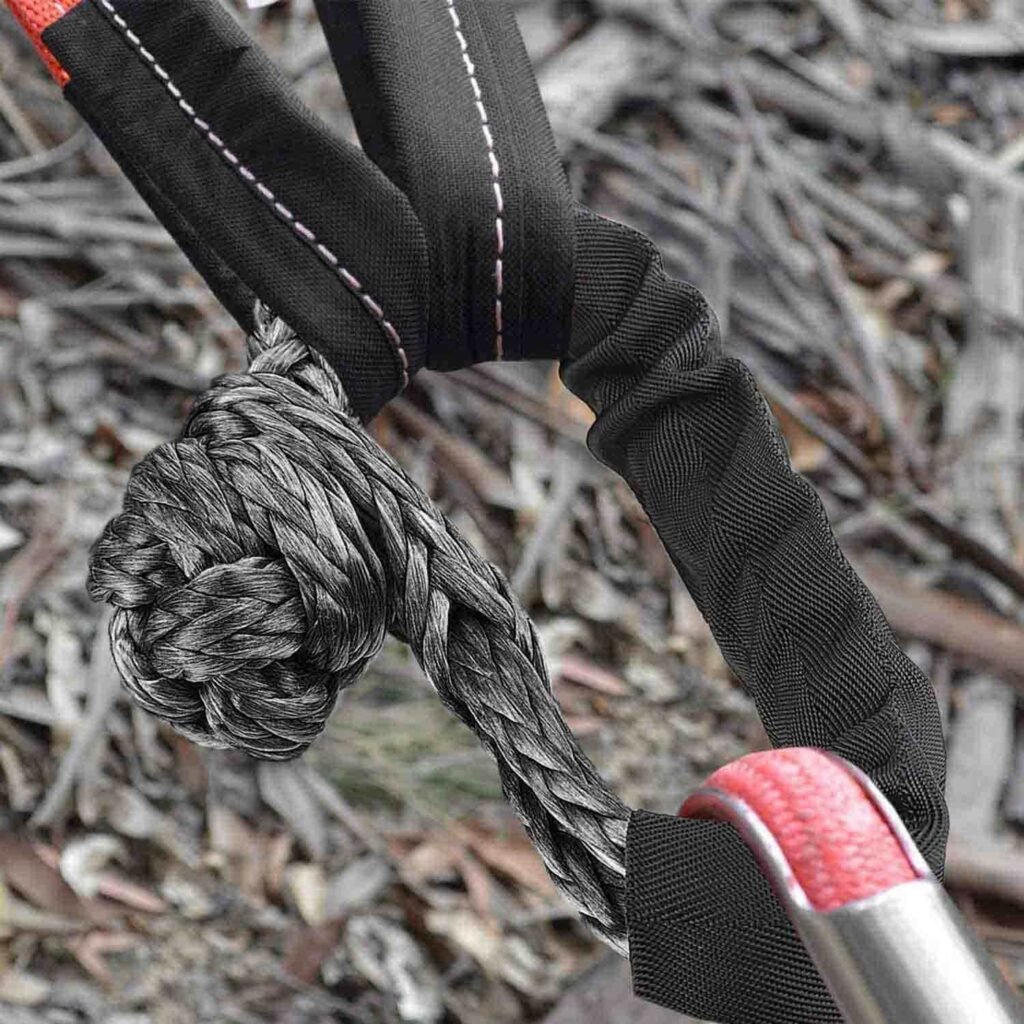
In the soft shackle vs hard shackle debate, flexibility versus rigid design is very important. Soft shackles are ideal here. They are far easier to fit in confined areas because they are not rigid. Steel shackles, being rigid, have a predetermined shape. Thus, they may not work in many situations.
I’ve personally struggled trying to fit a D-ring onto an awkward recovery point; it’s frustrating. Rigid shackles find it difficult to negotiate complicated angles, whereas flexible soft shackles can easily wrap around a roll cage or bumper.
1. Soft Shackle
Highly Flexible
Soft shackle ropes are incredibly flexible, which is a primary feature that makes their usage highly adaptable.
Adjusts Shape
This flexibility is helpful when connecting to hard-to-reach areas because you can mold the shackle where you need it to go.
Tight Spaces
Many different soft shackle types can fit into tighter spaces where a rigid hard shackle simply cannot. This is a clear win for the soft shackel vs hard shackle comparison.
2. Hard Shackle
Rigid
The main difference in the hard shackle vs soft shackle discussion is rigidity; the metal hard shackle does not bend.
Fixed Shape
This inability to bend is a defining characteristic. If a bend is needed to fit the anchor point, a hard shackle will not work.
Cumbersome
While useful, the best hard shackle is still rigid. This rigidity can make them extremely awkward to attach, especially in tight or complex spaces.
3. Application Fit
Irregular Shapes
Unlike hard shackles, which can prove useless when the anchor point is an odd shape, a soft shackle can connect to almost anything. This versatility clearly explains what are soft shackles used for.
No Fit
A rigid shackle’s “no fit” scenario in complex situations is a common point of failure I’ve seen in the field.
D. Handling And Storage Differences
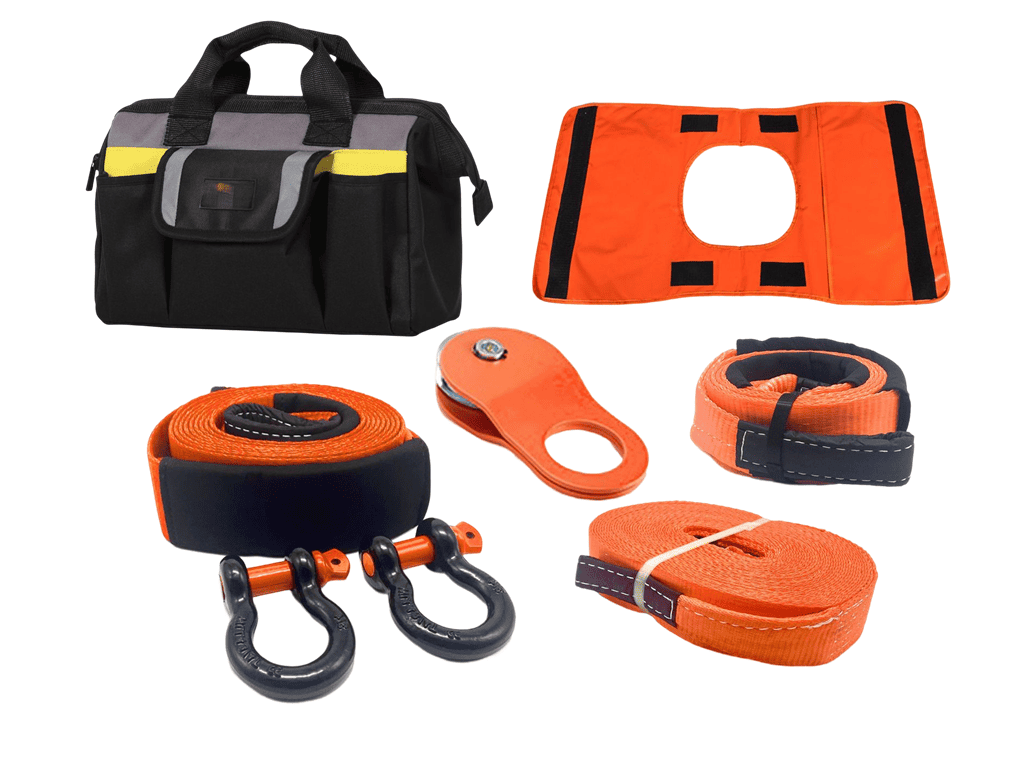
Handling and storage is a practical matter that we all have to deal with in the field. How many times have you heard steel gear clanging around in a recovery bag? As SandyCats points out, “Traditional steel shackles are hefty, and when you’re packing gear for an off-road trip, weight can get out of control quickly.” Soft shackles are handled easily because they are lightweight and flexible.
Storage is also convenient, as they occupy minimal space, often fitting in a small recovery bag. In comparison, hard shackles are bulky, clang around, and take up significant space. Transporting them can be complicated, and their storage requires more available space. Reading a soft shackle instructions pdf often demonstrates their simplicity. Ease of use is a welcome feature in any recovery kit.
1. Portability
Minimal Weight
Soft shackles add almost unnoticeable weight to a recovery kit. This is a huge advantage for portability. The weight is almost negligible, so you can easily pack numerous soft shackles with you.
Easy Store
Soft shackles are easy to store. They can be rolled and fitted into various spaces. A glove compartment or a small carry bag can easily house them, as they occupy very little volume.
2. Physical Strain
Reduced
Soft shackles are recovery tools that help reduce undue physical strain. The ease in manipulating soft shackles makes recovery setup much easier. This results in less fatigue when performing recovery tasks.
Hefty
Steel shackles, on the other hand, are hefty. A person can find it difficult lifting and connecting these heavy metal shackles, and this hard work only adds strain to the recovery process.
3. Deployment
Quick
Deployment takes just a few seconds. You can connect a soft shackle quickly, often in seconds. No pins or tools are required, which can save valuable time.
Simple
You just loop it and secure the soft shackle knot. It’s as simple as that. The design is intuitive, quick, and efficient.
4. Storage Needs
Kit Bag
A recovery kit bag is the best storage option. It helps maintain the soft shackle, keeping it clean and ready for use.
Dry Storage
It is very important to use dry storage. The first step after use is ensuring the shackle is completely dry. This simple step prevents mold and fiber aging.
E. Performance In Environmental Elements
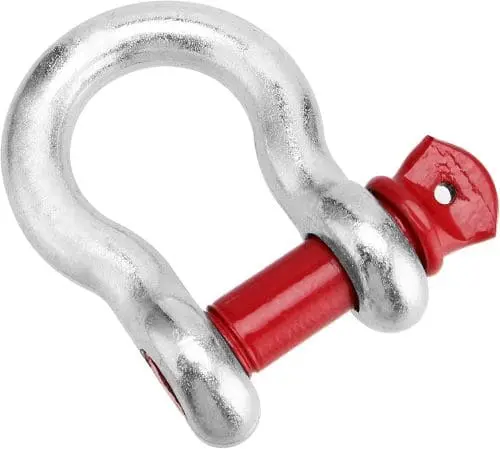
Choosing between a soft shackel vs hard shackle also depends on the environment. Water, mud, and sun affect each shackle type differently. Soft shackles float, which makes them much easier to find in water or mud. You can lose hard shackles very easily, as they sink immediately.
1. Water/Mud
Floats
You can recover your gear easily because a soft shackle floats on water or mud. This is a significant benefit during a wet or muddy recovery.
Sinks
The steel shackle sinks right away. It is often gone forever if you drop it in deep mud or water. Losing gear like this is a major downfall.
Easy Spot
This floating property makes the soft shackle simple to spot and retrieve, which saves both time and money.
2. UV Resistance
Urethane Coated
Good soft shackles are often urethane coated. This coating adds UV resistance, which helps to protect the fibers from the damaging sun.
UV Resistant
UV-resistant fibers are vital for a long life. However, you should always store them out of direct sunlight to prevent the sun from weakening the fibers over time.
Degrades
A soft shackle is vulnerable without UV protection, as sunlight degrades the fibers. The sun, by contrast, does not affect steel.
3. Wet Strength
Decreased MBS
Be aware that the Minimum Breaking Strength (MBS) of soft shackles can decrease when wet; this is true for all synthetic ropes.
No Difference
Conversely, there are no conditions under which a steel shackle becomes weaker; it remains strong regardless of wet or dry conditions. Water, however, will eventually rust steel.
F. Comparing Thermal Resistance Limits
Heat is an important factor of concern in the soft shackel vs hard shackle debate. Synthetic fibers versus steel is a core issue. Each of these materials handles extreme temperatures differently. You must consider these points for any application. In any situation involving high temperatures, soft shackles are a no-go, as they will fail. The only viable option is a steel hard shackle for any high-temperature application.
1. Soft Shackle
145°C Limit
UHMWPE fiber has a relatively low melting point of around 145°C (293°F). This is a hard limit. Soft shackles must be kept away from high-temperature sources.
Low Melting
This particular low melting point is a significant weakness. Hot exhaust pipes or engine parts can easily damage them. You must exercise extreme caution during use.
2. Hard Shackle
Superior
Metal has superior heat resistance. It can easily withstand temperatures well above 145°C without damage.
High-Temp
This property makes steel shackles perfectly suited for high-temp environments. They are the clear winners when significant heat is involved.
3. Heat Damage
Reduces Performance
A soft shackle’s performance is always reduced when exposed to high heat. As it approaches its melting point, its performance is compromised, creating a major safety concern.
Avoid Heat
You must avoid any high-heat situation at all costs. Check every connection point with great scrutiny. Make sure it is completely cooled off before any soft shackle use.
G. Corrosion And Chemical Resistance
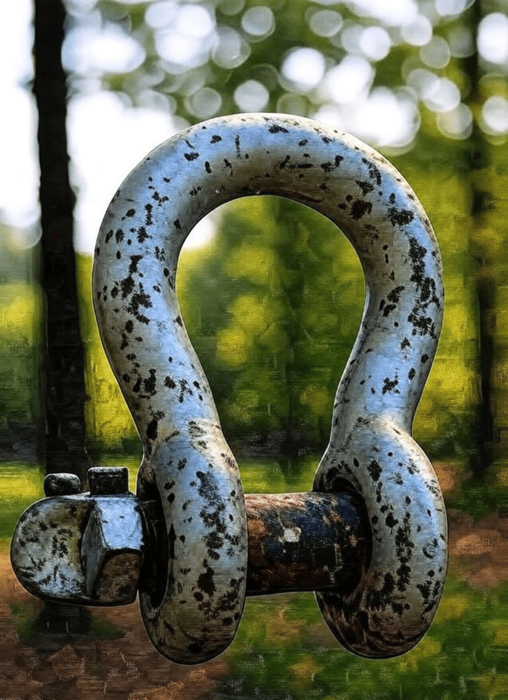
Corrosion is a serious problem for metal. The soft shackel vs hard shackle comparison breaks down the distinctions quite dramatically here. Soft shackles do not rust. They are also resistant to a wide array of chemicals. This makes them preferable in many extreme conditions. Steel shackles, on the other hand, do corrode. Rust is a plague to steel. Not only does rust weaken the metal, but it can also seize the pin, making the shackle utterly useless.
1. Soft Shackle
Resists Rust
A soft shackle resists rust perfectly because it is constructed from synthetic fiber. Better yet, no part of it can corrode. This is ideal in waterlogged or marine conditions.
Chemical Resistant
UHMWPE fiber is also quite resistant to chemical damage. Oil, gas, and several other chemicals do not harm it, so it keeps on performing.
Impervious
Salt and water also do not harm them. Soft shackles can be trusted in virtually any climatic condition.
2. Hard Shackle
Can Corrode
Over time, steel shackles have a high propensity to corrode. This is especially true in wet or salty climates. You should look for pitting or rust, as these are signs of a weakened structure.
Can Rust
A shackle with rust on it is a shackle that poses a danger. Performing a regular check on shackles for any signs of rust is a smart safety practice.
Seizing
The pin threads can rust and seize, which effectively locks the shackle so you cannot open it. This is one of the most common failure points I’ve encountered with old gear.
3. Marine Use
Ideal
Soft shackles are perfect for marine use because they float and do not rust.
Salty Environments
They flourish in salty environments since saltwater has no negative impact on the fibers, whereas steel shackles will fail in those same conditions.
H. Ease Of Connection And Tool Use
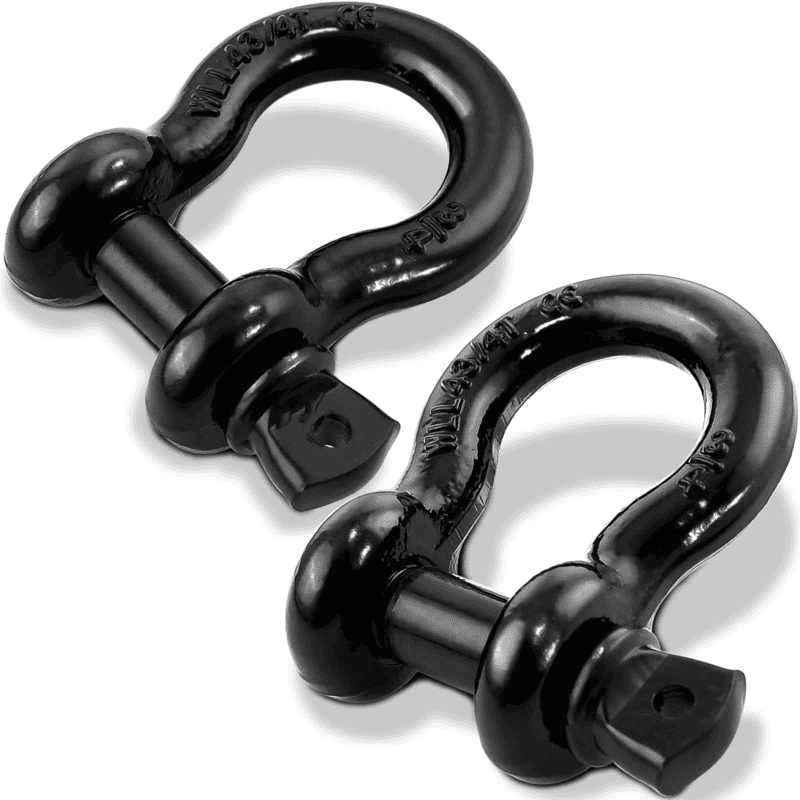
Sometimes the nature of a problem speaks for itself, and this is the case with ease of use. The soft shackel vs hard shackle choice determines how swiftly you get a job done. Soft shackles require no tools, making them fast and simple. Hard shackles require a screw-in pin, which sometimes binds or seizes. This is incredibly frustrating.
1. Soft Shackle
By Hand
Soft shackles are uncomplicated to open and close by hand. The loop and knot system is quite simple and very quick.
No Tools
You do not need any tools. This is a distinct advantage, as no tools means less gear to carry.
Quick
In tough recoveries, speed counts. You can set up in seconds with soft shackles.
2. Hard Shackle
Requires Pin
You must unscrew a pin to use a hard shackle. You then have to line up the holes and screw it back in.
Finger-Tight
The proper method is to screw the pin to finger-tight, then back it off a half-turn. This prevents it from seizing under load.
Half-Turn
Do not forget the half-turn rule. As Auto Expert John Cadogan warns, “if you put 5t of load onto the mechanically-tightened pin thread… you’ll never get it undone again.”
3. Binding
Never Binds
A soft shackle never binds or gets stuck, even after extreme loads. There is a noticeable relief when something that was under heavy load can be opened easily by hand.
Can Seize
A hard shackle pin can seize. This happens from over-tightening under load, rust, and dirt. A seized shackle is a useless shackle.
I. Versatility For Attachment Angles
Versatility is where soft shackles truly shine. The difference between soft v hard shackles is a big one here. Soft shackles are flexible and can handle multi-directional pulls. They also slip over a number of straps easily. Steel shackles are rigid and designed primarily for straight-line, longitudinal pulls. Using them for a side pull, or lateral load, is extremely dangerous.
1. Multi-Strap
Easy
It is very simple to connect numerous straps together with a soft shackle. The large, flexible loop has plenty of extra space for bridle recoveries.
Fits All
A soft shackle fits almost all recovery points with ease. Its flexibility is its greatest strength, offering extreme versatility.
2. Steel Shackle
Small Opening
A steel shackle has a small, fixed opening. It is often difficult to fit numerous straps inside, which severely limits your options.
Difficult
This small opening makes connecting multiple items quite challenging. You may find you cannot connect all your gear.
3. Load Direction
Longitudinal
A steel bow shackle is rated for longitudinal pulls. This is a straight-line pull, which is its strongest direction.
No Lateral
You must not use it for lateral (side) loads. A side pull can bend the pin and strip its threads, which is exceptionally dangerous.
Multi-Directional
A soft shackle works perfectly under multi-directional pulls. It simply conforms to the angle, which provides much more safety during complex recoveries.
| Feature | Soft Material | Soft Strength | Soft Safety | Hard Material | Hard Strength | Hard Safety |
| Material | UHMWPE | 12-Strand SK75 | Flexible | Forged Steel | Grade S / 316 SS | Rigid |
| Rating | MBS (e.g., 14.7T) | 30% > Steel (equiv. wt) | No Stored Energy | WLL (e.g., 4.7T) | FoS: ~6:1 | High Stored Energy |
| Weight | < 3 lbs | 80% Lighter | Floats | > 30 lbs (equiv.) | Sinks | N/A |
| Failure | Abrasion/Cut Risk | Heat (145°C) | Low Recoil | Abrasion Resist. | High Heat Resist. | Projectile Hazard |
| Handling | Multi-angle | No Tools | Low Impact | Linear Load Only | Pin (Jam Risk) | N/A |
| Primary Use | Kinetic Recovery | Marine/Mooring | Strap Joining | Static Towing | Winching | Sharp Edges |
Technical Comparison: Soft Shackle vs. Hard Shackle!
How Does ‘Soft Shackel Vs Hard Shackle’ Impact Safety?

The soft shackel vs hard shackle decision massively impacts safety. Here is how they compare in crucial recoveries.
No Projectile
The soft shackle vs hard shackle pros and cons list is dominated by safety. Soft shackles do not fail as projectiles. Being light, they do not store kinetic energy as metals do. This makes the soft vs hard shackles choice a critical safety decision. Synthetic fibers simply fall to the ground if they break.
Kinetic Energy
Under load, steel shackles can hold a terrifying amount of kinetic energy. When a hard shackle breaks, that energy is released explosively. It then becomes a lethal projectile. This entire risk is eliminated when soft shackles are used. The amount of energy stored by a soft shackle is negligible. This is why they are so much safer for kinetic recoveries. As Unsealed 4X4 magazine bluntly states, “If a pin or any other part of a steel shackle fails… That could injure or even kill anyone in its path.”
Vehicle Damage
The soft shackle vs d ring debate also includes vehicle damage. Hard metal shackles damage paint. They chip bumpers and recovery points. Soft shackles, by contrast, are gentle. They will not scratch or dent your vehicle. This is a clear benefit that a steel soft shackle vs d-ring does not provide.
Reduced Risk
Using soft shackles means reduced overall risk. The hard vs soft shackle comparison is clear here. There is no risk of flying metal. Vehicle damage is reduced. The entire recovery becomes safer. The soft v hard shackles choice clearly favors safety, protecting both your gear and yourself.
Personal Harm
If you are not careful, a flying metal shackle can cause serious injury or even death. This is the single biggest risk in recovery. Soft shackles are inherently safer for people. The harm from a potential impact is not comparable. This is why many are now seeking a hard shackle replacement. Above all, your personal safety must come first.
When to Use Soft Shackles?

Soft shackles can be used in many different areas, and in many of these situations, having a soft shackle provides a great benefit. Also, watching out this video is worth worthy!
Kinetic Rope
Soft shackles must always be used with a kinetic rope. This is what I trust for my own rig. The kinetic recovery process generates massive forces, and having a steel shackle in that system can be a deathtrap. The soft shackle rope connection is fundamentally safer. It completely eliminates the risk of a metal projectile, which is the primary reason soft shackles are used here.
30% Elongation
Kinetic ropes work by stretching, and they are capable of up to 30% elongation. It is this elongation and release of energy that unsticks the vehicle. A Dyneema soft shackle can safely handle these dynamic loads. The shackle works with the rope’s elongation and does not introduce a dangerous rigid component.
Marine Mooring
Soft shackles are used in a variety of applications, including marine mooring. They are specific for mooring lines as they are lightweight, will not be lost if dropped (they float), and will not rust or corrode in salt water, which is ideal for marine and boat applications. Precision Sails notes they have “revolutionized the sailing industry” because they are “lightweight, safer, and more versatile”.
Strap Joining
A soft shackle is the ideal way to secure a strap when two straps must be joined. Using a soft shackle safely replaces the metal hazard that would otherwise create a deadly projectile. A soft shackle creates a secure, flexible link, making it the only safe choice in this case.
Powersport Recovery
Why would you use soft shackles on smaller vehicles? An ASR soft shackle works very well for ATVs and UTVs. These vehicles are relatively small. The soft shackle has more than enough strength to meet powersport recovery requirements, and it is also very convenient to carry.
| Application | Load Type | Key Attribute | Associated Tech | Hazard Avoided | Elongation % | Scale |
| Kinetic Recovery | Dynamic | Safety | Kinetic Rope (Nylon 66) | Metal Projectile | 30% | 4×4 / Trucks |
| Marine Mooring | Static/Shock | Buoyancy | HMPE/Dyneema Lines | Rust / Sinking | Low | Marine / Vessel |
| Strap Joining | Dynamic | Flexibility | Snatch Straps | Projectile Hazard | 20-30% | 4×4 Recovery |
| Powersport | Dynamic | WLL/Weight Ratio | ATV Winch Line | Low Convenience | <10% | ATV / UT |
| Heavy Lifting | Static | Strength-Weight | UHMWPE Slings | Impact Damage | <5% | Industrial |
Technical Application Matrix: Soft Shackles!
When Are Hard Shackles Superior?
Even with the clear versatility of soft shackles, there are situations where rigid hard shackles are better suited. Here are the situations where a rigid hard shackle is the correct choice.
Sharp Edges
For edges that are sharp, you must use hard shackle types. A soft shackle can be cut by a sharp recovery point, especially under load. Steel has no such issues. If an anchor point has sharp metal edges, the best hard shackle is the safer bet, as it will not fail from being cut. Have you ever inspected your recovery points? Many have surprisingly sharp, laser-cut edges.
145°C+ Environments
Unlike soft shackles, hard shackles are made of steel, which makes them the superior choice for high-temperature jobs. Soft shackles have a very low melting point; the UHMWPE fiber melts around 145°C.
Static Pulls
For actions that include static lifting or anchoring a winch, hard shackles are often better suited. The soft shackle vs hard shackle choice is predominately steel when there is no kinetic energy involved in the pull.
Rated Points
Many vehicles have rated recovery points. These are frequently thick steel tabs. A steel shackle of the proper pin size fits perfectly into this common configuration. However, even here, many are now seeking a hard shackle replacement with a soft shackle, provided the edges are smooth.
Winching Anchor
A hard shackle is commonly used to attach the winch hook to a tree strap. This is an anchor point for a static connection. A steel shackle provides a strong, rigid connection and integrates the winch line to a snatch block or strap.
Soft Shackel Vs Hard Shackle: Maintenance and Lifespan!

Taking care of your gear is critical for safety. The soft shackel vs hard shackle comparison reveals very different maintenance requirements. How often do you inspect your gear? Holloway Houston advises, “Inspect each shackle before use. If you see abrasions or cuts… replace it with a new one immediately.”
Inspect Cuts
Soft shackels need inspecting for cuts and worn spots. This is the most essential verification step. You must examine them for abrasions and frays. Even tiny cuts can compromise the rope’s strength. Much like making a soft shackel requires care, the assessment is a straightforward but vital process. A damaged soft shackle must be retired.
UV Degradation
Soft shackles should be stored out of direct sunlight. This helps increase the lifespan of the shackles. We provide a soft shackle instructions pdf with our products that covers this.
Rinse Freshwater
Mud, sand, and other dirt can get into the fibers. Cleaning can be done with a simple freshwater rinse. Always let them dry completely before storing to prevent fiber damage. This is splendid for preventing degradation and ensuring a long life.
Thread Seizing
Hard shackles have threads that can rust and seize. This problem is common with steel hard shackles. This is not a problem for soft shackles, which have no threads.
Retire Damage
If you see any damage, retire the shackle immediately. This applies to both types. An unsafe hard shackle is one that is bent or has damaged threads. An unsafe soft shackle is one that is cut or frayed. Risking a failure is not worth a few dollars.
| Maintenance Area | Soft Shackle | Soft Detail | Hard Shackle | Hard Detail | Key Risk |
| Inspection | Visual | Cuts, Abrasions, Frays | Visual | Bends, Thread Damage | Catastrophic Failure |
| Retirement | Any Damage | Cuts, UV Degradation | Any Damage | Bent Body, Damaged Pin | Compromised Strength |
| Contamination | Particulate (Sand, Mud) | Rinsing Required | Oxidation (Rust) | Seizing Risk | Thread Seizure |
| Cleaning | Freshwater Rinse | Air Dry Completely | Wipe Down | Prevent Rust | Fiber Degradation (Wet) |
| Storage | Dark, Dry | Avoid Sunlight (UV) | Dry | Avoid Moisture | UV Degradation (Soft) |
| Primary Failure | Fiber Cuts | Abrasion | Thread Seizing | Rust / Galling | Sudden Break |
Technical Maintenance Comparison: Soft vs. Hard Shackles!
FAQs!
You have questions about soft shackel vs hard shackle. We have answers based on our experience.
Are Soft Shackles Stronger Than 3/4″ Steel?
Yes, they often are. The soft shackle vs hard shackle size comparison is surprising. A 1/2 inch soft shackle can have a breaking strength of 39,000 lbs, which is stronger than many 3/4 inch steel shackles. They offer amazing strength at a tiny fraction of the weight.
Can UHMWPE Shackles Lift Heavy Loads?
Yes. For heavy lifting, an UHMWPE soft shackle can absolutely be used. They are used in construction and mining, not just off-road. They are serious industrial rigging tools. (The hard shackle terraria item is for “defense,” but in real life, it is for lifting.)
Are Soft Shackles Safe For Winch Recovery?
Yes, they are very safe. You can learn how to use soft shackle connections for winching. They are safer than metal hooks or shackles because they completely remove the worry of metal projectiles. Many operators replace their winch hook entirely with an x soft shackel. The soft shackle knot is designed to tighten securely under load.
Can Soft Shackles Safely Join Kinetic Ropes?
This is what they are best for. A rope soft shackle is the only safe way to join two kinetic ropes. You should never use any form of metal for this connection. You can find videos on you tube tie soft shackels for this purpose. It creates a very strong, flexible, and safe link.
What MBS Rating Does My 4×4 Need?
A good rule of thumb is 2-3 times your vehicle’s Gross Vehicle Mass (GVM). For a 4,000kg (GVM) vehicle, you need gear with a WLL of at least 8,000kg. This applies to the soft shackle vs hard shackle vs bow shackle choice. This is different from a vehicle’s suspension shackle; changing one, like a 2000 jeep rear shackle is hard to change, and is hard-core mechanical work.
Conclusion
You now know the facts for soft shackel vs hard shackle. Soft shackles are safer, lighter, and more versatile. Hard shackles are superior for high heat and sharp edges. This choice is now easier. Choose based on your specific needs, and visit Duracordix for high-quality synthetic recovery equipment. We have what you need.

